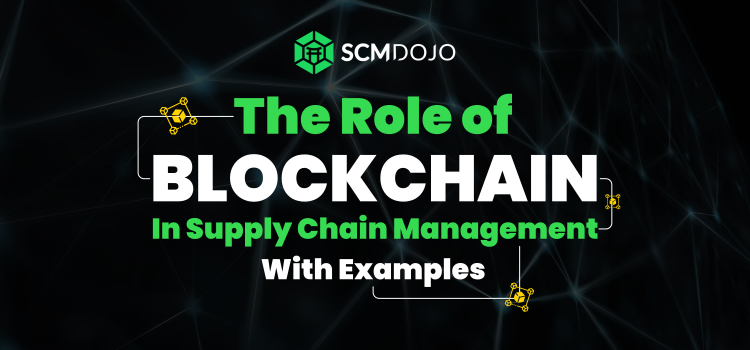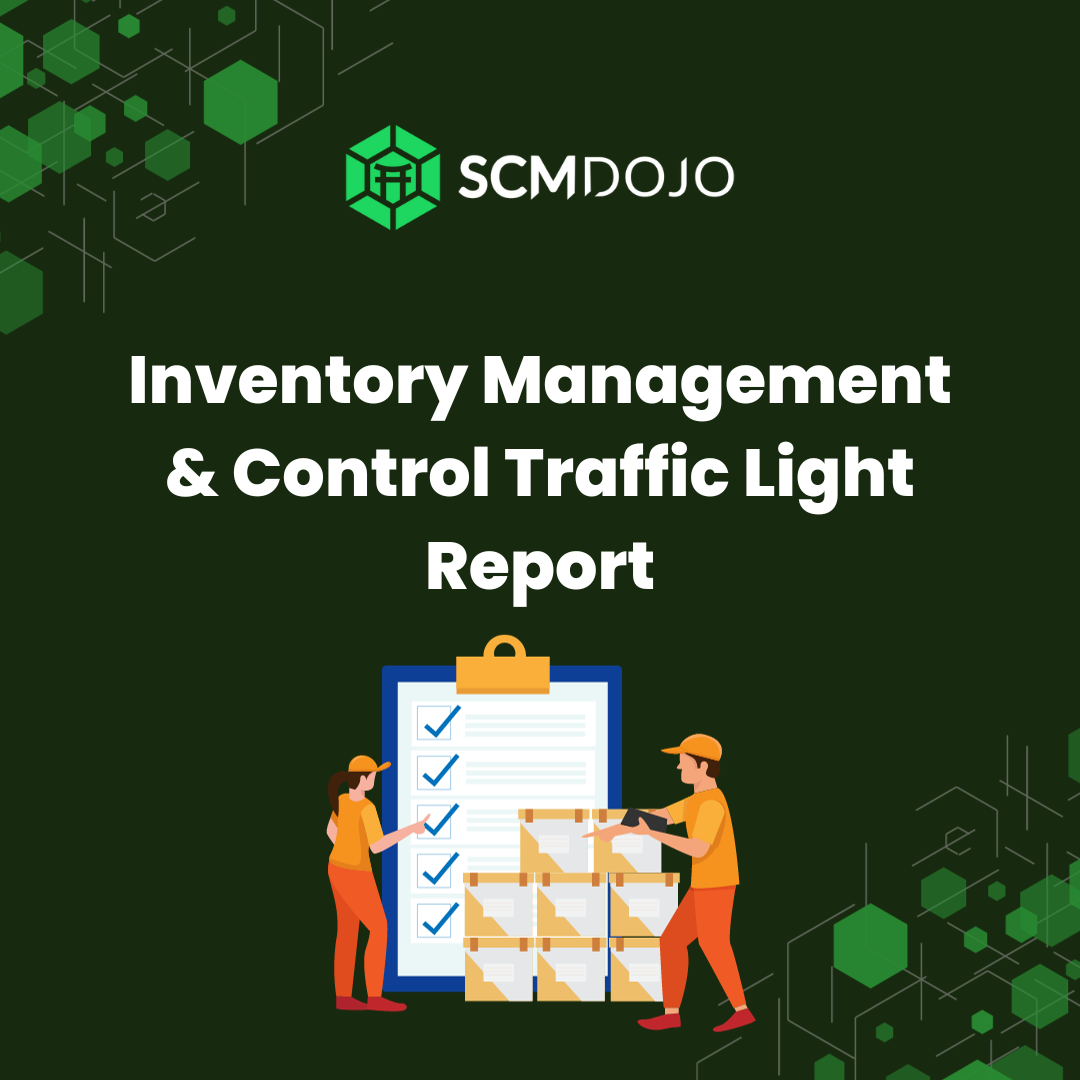Blockchain has evolved as a highly secure and fast way of managing transactions and has proven benefits in almost all fields. In the latest systems, we can see its benefits in full swing. Here, we’ll discuss how it becomes useful for SCMs and what are some blockchain supply chain examples. For a better understanding, let’s explore some basic concepts.
Understanding Supply Chain
The production industry uses a variety of procedures to serve its consumers through the market; all these activities can be covered under one umbrella term: supply chain. Its purpose is to empower the production industry to deliver state-of-the-art experience to the end users.
Supply chain can’t be limited to only the physical products; it is also related to services, although there may be a slight change in steps. The purpose and monitoring remain the same. It should be systemized and well-designed.
It involves several partners from start to end. Everyone has a specific role and significance. It requires a comprehensive flow of information and materials to achieve the targets. Integration of supply chains is widely helpful in lowering costs and increasing quality. Resource extension, quick marketing and increased customer retention are benefits of integrated supply chains.
Like other systems, supply chains have some prominent areas with high vulnerabilities. These areas are needed to be more secure against any threat. Facts and figures predict that any distraction or vulnerability in these areas charges high costs. It may reach up to 45% of the annual profit of the organization and can continue for years.
What is a supply chain management system (SCM)?
When talking about SCM, we can elaborate it as integrating all dependent business activities, including resources and actors, to smoothen the workflow. It comprises all elements from the origin (the raw material) to the consumption networks (end users).
Initially, these were managed manually, but the intrusion of digital technologies revolutionized it. Now, real-time connections provide more accurate data and information, which helps create collaboration in the digital world. It has made visible changes in the SCM systems.
Many companies are providing excellent SCM software solutions based on the latest technology, like blockchain. This new era is expected to explore new horizons in supply chain management.
Predictions about the blockchain Supply chain market
The growing use of blockchain in supply chain systems has unveiled wide opportunities globally. Every day, many transactions have been made in the supply chain industry that require special management. Each transaction has much information that must be kept confidential and secure.
Blockchain technology provides secure ways to deal with this information. Using blockchain technology, all the procedures like authentication of information, sales, certifications, approvals and many other procedures can be performed quickly and transparently.
Predictions of rapid growth are made about this market. As per an estimate, in 2020, its worth was $253 million and predicted to grow up to $3,272 million in 2026. transparency, traceability, security and robustness are the main demands of blockchain-based SCM solutions. It has greatly increased the demand for blockchain-based solutions.
How does Blockchain work for the supply chain?
In contrast to other public blockchains, supply chain management blockchain is private and authorization-based. Mainly, it includes four roles comprising organizations, registrars, certifiers and actors. These participants start transactions in the network through smart contracts.
For strict security purposes, authorized blockchains are preferred in SCM systems. In this kind of system, only well-recognized persons are allowed to validate the initiated transactions. Every actor in blockchain supply chain management has roles bound to some restrictions. For example, the end users only can see the blockchain data and can’t make any changes to it.
Hash function validated and encrypted data is stored in a block with a timestamp and linked to the main blockchain. A copy of this shared ledger is available to all the stakeholders and auto-updated when a change is made, or any new block is added to it. All users can view and trace their relevant data; however, only specially authorized actors can initiate transactions.
What difference is made by blockchain to SCM?
Supply chain management is transformed through Blockchain technology; it proposes a decentralized and secure way to store transactions and maintain data among a network of members. A few of the key roles of blockchain in SCM are as follows:
Transparency and Traceability: Blockchain gives a straightforward and immutable record where transactions and information connected to the production network can be recorded. Every transaction is connected to the past one, making an unmistakable and solid path of data. This empowers all partners to follow the excursion of items from the source to the end client progressively, upgrading responsibility and lessening the gamble of misrepresentation or fake products.
Provenance Verification: Verification and authenticity of origin are critical for some products or industries, such as food, pharmaceuticals, and luxury goods. Blockchain enables provenance verification by recording necessary data, such as details about manufacturing and processing, certifications, and quality inspections. Consumers can view all the authentic information about the product by scanning the QR code.
Enhanced Security and Immutability: Blockchain technology secures and distributes the encrypted information across the network. It also makes it highly secure and tamper resistant or stops unauthorized alterations. Once a record is added to the blockchain, it cannot be changed retroactively. It ensures the integrity and genuineness of the data.
Smart Contracts for Automation: Savvy contracts are self-executing contracts with the particulars of the arrangement straightforwardly composed into code. In the production network, the board, shrewd agreements can robotize different cycles, for example, installment discharges, stock administration, and conveyance affirmations, in light of predefined conditions. This computerization smoothes out activities and diminishes managerial expenses.
Efficient Inventory Management: Blockchain can be used to make a common and continuous perspective on stock across the inventory network. This assists in advancing reviewing levels, decreasing conveying costs, and limiting stockouts by empowering exact interest gauging and convenient renewal.
Streamlined Supplier and Vendor Management: Managing supplier and merchant connections are basic in the store network. Blockchain can smooth out this cycle by giving a safe stage for overseeing agreements, installments, and execution records. This can prompt more effective and reliable joint efforts between accomplices.
Cost Reduction and Efficiency Improvement: By removing mediators, lessening desk work, and computerizing processes through shrewd agreements, blockchain can altogether diminish functional expenses and further develop general production network productivity. This is especially gainful for cross-line exchanges and worldwide exchanges.
Compliance and Auditing: Blockchain empowers constant checking and following of consistency with guidelines and industry principles. This works with consistent examining and announcing, guaranteeing that all gatherings comply with the necessary principles and guidelines throughout the production network.
Blockchain’s capability to reform the production network of the board lies in its capacity to make a familiar, secure, and straightforward computerized record that can improve trust, productivity, and responsibility all through the store network environment.
Blockchain Supply Chain Examples
Supply chain control
It makes all data available to view from end to end with increasing transparency and control over all supply chain procedures. It enhances collaborations and brings faster solutions to different issues among different system users.
Supply chain finance management
It enables the creation and management of the financial responsibilities of various parties included in a deal and an immutable record that is visible to the entire network. It manages pre-designed events for managing financial issues or transactions securely.
Risk Management
It records and manages all the data and operational history, includes all details about the supplier or vendors and relevant documents, and keeps it immutable. All this data has a timestamp. It helps to mitigate the risk factors and improves the risk management.
Logistic Management
It also improves the logistic management by keeping all the responsibility shift proofs. Their immutability eliminates the risk of changing any information. It makes tracking easy and transparent. Continually monitoring goods in transit makes it easy to manage and keep everyone updated.
Authenticity Confirmation
The authenticity of materials and products becomes easy and more reliable. It becomes practical by adding documents about the origin and worth of the finished products. All these things help in reducing the loss and risk factors.
Compliance Management
It enables a high-quality compliance system by offering a tempering resistant audit of all production network information and exchanges, mechanized consistency checks against inside, worldwide, industry-and area explicit guidelines to forestall consistency infringement and satisfy the administrative need for merchandise provenance data.
Claim Management
It enables quick claim management and easy resolution of the issues because it contains all relevant data in the supply chain. It includes data from the origin of raw materials up to products, their shipments, logistic records and traceability all the way.
Inventory Management
It enables the recording and following information on stock development between various offices and its usage all through different assembling stages, observing stock accessibility across areas for smoothed-out stock control and opportune renewal.
Important Characteristics
Blockchain SCM system has several industry favourite characteristics, although they might differ for different businesses. Here are a few of these key features.
- Automatic record-keeping and updating
- Easy tracking and tracing of the supply chain procedures
- Automation based on smart contracts
- Supplier data authentication
- Registration of products
- Audit trail of documents
- hashing and timestamping
- Data authentication
- Highly secure
- E-signing of transactions
Wrap Up
Supply chain management systems are also growing fast by adopting the latest technologies. Blockchain technology has changed the game for it. It brought visible changes to SCM systems and businesses’ growth using blockchain supply chain systems. It has a bright future, and a greater increase in its market is predicted already. So, if you want to answer the call of time, move on to implementing blockchain technology.



